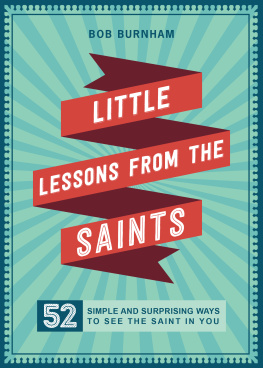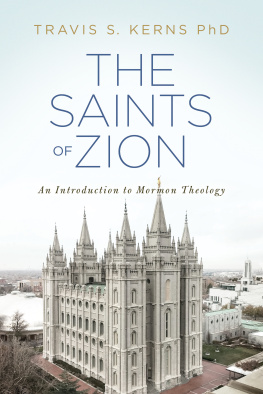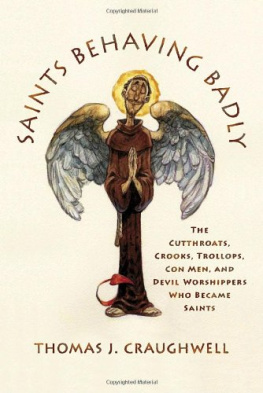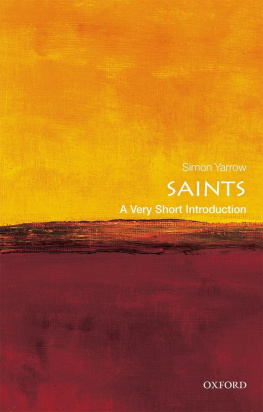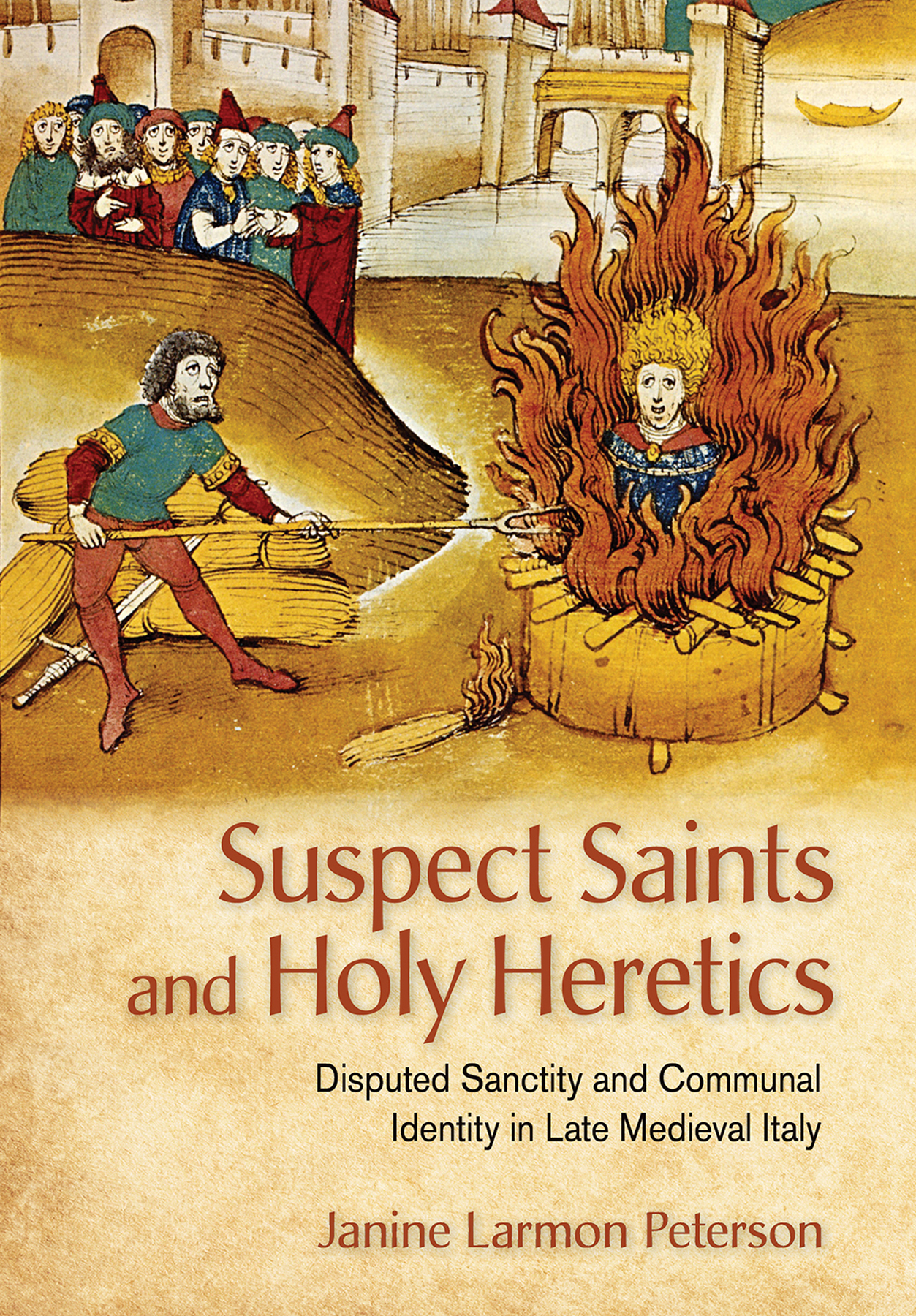A CKNOWLEDGMENTS
Research for this book was possible due to a number of wonderful friends, colleagues, and institutions over many years. I am grateful for support provided by the American Catholic Historical Association (John Tracy Ellis Dissertation Award); the American Historical Association (Bernadotte E. Schmitt Research Grant); the Center for Medieval Studies at the University of Notre Dame (Ambrosiana Microfilms Travel Stipend); grants and fellowships from the College of Arts and Sciences and the Department of History, Indiana University (Paul V. McNutt and Kathleen McNutt Watson Graduate Fellowship, College of Arts and Sciences Dissertation Year Research Fellowship, Andressohn Fellowship, and Valerie J. Gulick Fellowship); the National Endowment for the Humanities (NEH Summer Stipend); and Marist College (Dean of Faculty/VPAA of Academic Affairs Summer Research Grants). Most of this book was written (or rewritten) during two halcyon periods: as a Medieval Fellow at the Center for Medieval Studies at Fordham University in spring 2014 and on a summer research appointment at Marist-Italy in summer 2016.
I have deep gratitude for the generous help of archivists and librarians. In particular, I thank the staff of the Archivio di Stato di Firenze; the Archivio di Stato di Milano; the Archivio Segreto Vaticano and the Biblioteca Apostolica Vaticano, Vatican City; the Biblioteca Ambrosiana, Milan; the Bibliotheca Casanatense, Rome; the Biblioteca Nazionale, Florence; and the Biblioteca Nazionale Braidense, Milan. In addition, the interlibrary loan staff of the libraries of Indiana University, Fordham University, and Marist College located a number of hard-to-find printed texts, without which this book would have been incomplete. Past and Present and Traditio kindly allowed me to use portions of my work published as articles in their journals. Some sections of chapter 4 were published in Holy Heretics in Later Medieval Italy, Past and Present 204 (2009): 331. Parts of chapter 3 previously appeared in The Politics of Sanctity in Thirteenth-Century Ferrara, Traditio 63 (2008): 30726.
I have been extremely fortunate to have had many knowledgeable individuals read portions or all of this manuscript, although any errors are, of course, mine alone. I would like to thank Kristin Bayer, Renate Blumenfeld-Kosinski, David Brakke, Louisa Burnham, Eileen Curley, Jennifer Kolpacoff Deane, Jay Diehl, Mary Harvey Doyno, Christine Dunn, Sally Dwyer-McNulty, Dyan Elliott, Mary Erler, Arnold Franklin, Alison Frazier, Gbor Klaniczay, Lauren Mancia, Nicholas Marshall, Sara McDougall, Catherine M. Mooney, Barbara Newman, James A. Palmer, Andrew Romig, Neslihan enocak, Leah Shopkow, and Dror Wahrman for their incisive and thoughtful comments. Many colleagues at various conferences provided invaluable feedback. Beatrice Arduini and Ben St. John helped with particularly thorny translations from Italian and Latin, respectively. I also owe a huge debt of gratitude to Mahinder S. Kingra, Cornell University Press readers, and the presss editorial board. Their comments were invaluable for the publication of this book in its present (and much improved) form.
One cannot thrive without a tribe. Mine is an eclectic mix of friends and scholars that I can always depend on. First and foremost is Dyan Elliott. I could not have dreamed for a more attentive and supportive teacher, mentor, and friend. She constantly pushes me outside of my comfort zone and has done more than I can acknowledge to make me a better thinker and writer. Leah Shopkow is and has always been a bastion of support. Others not already named, such as Kristina Christian, Christine Dunn, Joanne Filippone, Mary Halbach, Jill Massino, Jos Najar, Jody Prestia, James G. Snyder, Joseph and Rene Stubenrauch, and Jane Wickersham, have been there for me professionally and personally over the years it took to complete this book. I have benefited from many other scholars and friends in New York City, old and new, with whom I have been able to collaborate or reap the rewards of their knowledge.
Maryanne Kowaleski of Fordham University and H. Wayne Storey of Indiana University provided me invaluable mentoring as a young undergraduate student and well beyond. These remarkable teachers helped to foster my interest in the Middle Ages, encouraged me to go to graduate school and, in different ways, helped me to achieve that goal. Special thanks also to Richard Gyug, who advised me through my first published article long ago. Finally, it is not an exaggeration to say that I would not be publishing this book without the support of my parents, Karen and Bruce Larmon. I appreciate more than I can say the fact that they did not bat an eye when I announced I was going to college to major in Medieval Studies. And Larry Peterson, my partner of over two decades, cheerfully picked up and moved cross-country with me several times, joyfully took care of our increasing feline brood when I was off on research trips, and supported me every step of the way. Para ti, tres besos en la boca y uno in la cachete.
A BBREVIATIONS
AASS | Acta Sanctorum quotquot toto orbe coluntur. 65 vols. Antwerp-Brussels-Tongerlo-Paris, 16431940. |
Acta S. Officii | Acta S. Officii Bononie ab anno 1291 usque ad annum 1310. 3 vols. Edited by Lorenzo Paolini and Raniero Orioli. Fonti per la storia dItalia, 106. Rome: Istituto storico italiano per il Medio Evo, 19821984. |
ASF | Florence, Archivio di Stato di Firenze. |
ASV | Vatican City, Archivio Segreto Vaticano. |
BAV | Vatican City, Biblioteca Apostolica Vaticano. |
Eretici | DAlatri, Mariano, ed. Eretici e inquisitori in Italia: Studi e documenti. 2 vols. Rome: Istituto storico del Cappuccini, 1987. |
Itinerari | Zanella, Gabriele, ed. Itinerari ereticali patari e catari tra Rimini e Verona. Istituto Storico Italiano per il Medio Evo, Studi Storici, fasc. 153. Rome: Nella Sede dellIstituto, 1986. |
Meco | DeSantis, Antonio, ed. Meco del Sacco, inquisizione e processi per eresia. Ascoli-Avignone 13201346. Ascoli Piceno: A. DeSantis, 1982 [1980]. |
MGHSS | Monumenta Germaniae Historica, Scriptores. Hanover, Frankfurt, and Munich: Monumenta Germaniae Historica Institute, 1826. |
Milano 1300 | Benedetti, Marina, ed. Milano 1300: I processi inquisitoriali contro le devote e i devoti di santa Guglielma. Milan: Libri Scheiwiller, 1999. |
RIS | Rerum Italicarum Scriptores. 24 vols., series 2. Citt di CastelloBologna, 19171975. |
Riti | Vatican City, Archivio Segreto Vaticano, Congregazione dei Riti. |
Introduction
In the late thirteenth century, the Franciscan chronicler Salimbene de Adam described the recent cult of a layman in Cremona named Albert of Villa dOgna (d. 1279). Albert was a humble wine carrier and a local saint who could have lapsed into obscurity if not for Salimbenes famous description of him and the dogged efforts of his community to canonize him, which resulted in a seventeenth-century canonization process. Thanks to these sources, scholars such as Andr Vauchez, Augustine Thompson, and Lester K. Little reignited interest in Albert and the circumstances of his veneration. Salimbenes ire at the fact that bishops allowed his veneration without papal authorization reveals two points of contention about the construction of sanctity in late medieval Italy. The first was what criteria should assess holiness and the relative weight of each factor when assessing true or false sanctity. In the context of Salimbenes critique of Alberts cult, should Alberts ignoble socioeconomic background, presumed less-than-noteworthy morality, and predilection for wine have greater import than the testimony of witnesses who experienced miraculous answers to their prayers upon supplication to this saint? The second was about the process of sanctification and how it should occur: at the diocesan level through communal consensus between the citizens and their bishops, as had been traditional until the twelfth century, or solely at the pontifical level, as the papacy established in the thirteenth century? Salimbene directs the readers attention to this tension between competing authorities by berating those bishops who heeded common report about Alberts miracles and allowed his veneration instead of crushing the cult since the pope, who Salimbene thought should have the sole authority to judge signs of holiness and create cults, did not approve it.


